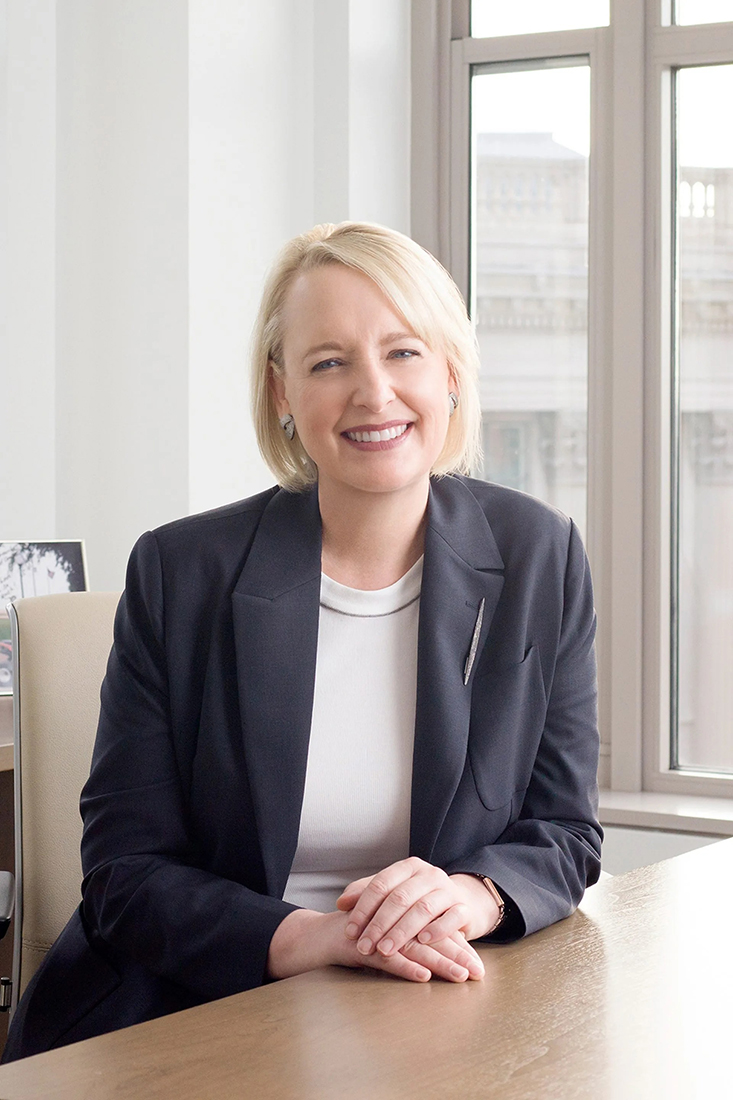
彼得·扎菲诺急需一些重要的信息,但他震惊地发现这些信息无处可寻。
那是2017年,他刚刚出任美国国际集团(AIG)的首席运营官。同年晚些时候,他还成为保险公司最大业务——一般保险(General Insurance)的首席执行官,该业务销售各种财产保险、意外伤害保险、责任保险和其他保险。这项业务陷入困境。“给我一份账户清单。”他回忆说。“我想看看核保人的名字,谁表现出色,谁表现不佳——我想向两者学习。”
但当公司查看其系统时,却发现核保人的名字与具体的保单没有关联。这比草率的记录更糟糕。核保、评估客户的风险状况并计算保险费率,是事关保险公司成败的最基本技能。财务业绩表明,美国国际集团在这方面做得很糟糕。美国国际集团的现任首席执行官扎菲诺说:“没有人知道谁在商业汽车和货运部门核保了什么。”
早期的冲击预示着接下来几年将面临更大的挑战。让核保业务转亏为盈只是未来数年转型的一大步骤。如今,大多数华尔街分析师认为,美国国际集团正在实现更广泛的转变,其中大部分转变是在新冠疫情期间实现的。根据Keefe, Bruyette & Woods的分析师团队的说法,该公司今年第一季度的表现“证实了形势正在全面好转”,该团队给予该股“跑赢大盘”的评级。巴克莱银行(Barclays)的分析师特雷西·本吉吉将美国国际集团“强大的核保能力”以及其他因素列为预期股价上涨的理由。
如果美国国际集团没有采取多管齐下的方法,包括解决核保业务问题、设计和执行全球转型计划,其中包括与埃森哲公司(Accenture)建立创新的合作伙伴关系,就不可能实现整体好转。这一合作始于2019年12月与埃森哲公司的首席执行官朱莉·斯威特的一次偶然会面。两家公司共同致力于扭转局面的几大要素,包括技术转型、新的数字化工作流程以及一项使 6000名美国国际集团员工成为埃森哲员工的计划——“这一规模是我们同时聘用人数最多的一次。”斯威特说。在此过程中,她回忆道:“我很开心地告诉彼得:‘我们的首席技术官亲自参与其中,他对我说,你们拥有的技术不仅是行业中最差的,而且可能是他所见过的最差的前三名。’”

从危机中复苏
对于那些不从事保险业的人来说,美国国际集团在2008年金融危机之后寂寂无名。该公司成立于1919年,已经发展成为全球保险业巨头和美国最大的保险公司,在2006年的《财富》美国500强榜单上排名第9位。21世纪初,随着美国房地产泡沫的膨胀,该公司大肆出售信用违约掉期,这是一种防范信用合同违约的保险形式。在2008年9月泡沫破裂、危机达到顶峰时,美国国际集团无法偿还突然欠下的各大主要金融机构的钱。“政府认为美国国际集团规模太大,不能倒闭,并承诺提供超过1800亿美元的救助资金。”美国金融危机调查委员会(Financial Crisis Inquiry Commission)后来的一份报告称。此次救助仍然是美国历史上规模最大的企业救助计划。到2008年年底,美国国际集团的市值缩水了98%。
由于名誉受损,该公司发展陷入困境,走上艰难的复苏之路。大约2万名员工在此之后立即离职或被解雇,该公司也难以物色到合适的高管人选,因为竞争对手中表现出色的高管都由于美国国际集团品牌受损而望而却步。留下来的员工都感到沮丧和悲观,而多位领导人似乎也无力重振公司。当董事会于2021年3月将扎菲诺从首席运营官提升为首席执行官时,他是美国国际集团16年来的第八位首席执行官。
甚至在担任首席运营官之前,当扎菲诺负责Marsh & McLennan公司的保险经纪和风险管理业务时,他就已经发现了美国国际集团的问题所在:几乎所有方面都存在问题。进入美国国际集团后,招募新的管理团队就成了当务之急。55岁的扎菲诺是一个“确保团队实现目标的人”,瑞士信贷集团(Credit Suisse)的资深保险分析师安德鲁·克利格尔曼说。“他鼓励员工完成任务,并确保他们是完成这些任务的合适人选。”让外部人士加入美国国际集团仍然很难,但扎菲诺从小就开始拓展自己的人脉。扎菲诺回忆称,他的父亲是一位著名的保险公司高管,周末会举办晚宴。“我认识了父亲的同龄人。当我年纪轻轻就成为(Marsh & McLennan子公司)的首席执行官时,这对我帮助很大。”如今,美国国际集团的12名高管中有9名是由扎菲诺任命的。
修复美国国际集团最糟糕的数据系统也是当务之急。该公司拥有数百万客户,但保险索赔都是纸面上的,录入人工数据系统的过程缓慢而费力。因此,对企业进行数字化改造将是一项艰巨的任务。
2019年年中,美国国际集团的总法律顾问露西·法托打电话给斯威特。他们早在几年前就认识了,当时两人都是纽约市顶级律师事务所的合伙人。斯威特经营的埃森哲公司是一家为全球企业提供信息技术服务的咨询巨头。法托向斯威特简要介绍了扎菲诺针对美国国际集团的振兴计划,并建议二者见面会谈。
“他看着我说:‘我不喜欢顾问。’”斯威特回忆起他们在午餐时的第一次会面。“他很直接。”斯威特对此不介意。她说,她不认为自己是顾问,因为“他们不承诺结果。他们之间也不是合作伙伴关系。”经过长时间的讨论,她和扎菲诺同意进行合作。
为了启动针对美国国际集团的信息技术转型,扎菲诺计划建立一个共享服务中心,该中心将为美国国际集团的各种业务职能处理多项任务,包括人力资源运营、索赔解决、精算运营和财务。该公司在马来西亚和其他地方的数据中心约有6000名员工,可以转调他们完成相关任务。
但斯威特对此表示怀疑,她敦促扎菲诺考虑另一条道路,因为美国国际集团亟需改变,而且缺乏内部专家。另一方面,埃森哲公司在运营共享服务业务和建立领先的数据中心方面有着数十年的经验。就完成这些任务而言,埃森哲公司不需要进行学习。扎菲诺同意了斯威特的提议。
于是就开始了将6000名美国国际集团员工转为埃森哲公司员工的计划。在受到高度监管的保险业,这项提议需要得到国家保险专员和外国政府的批准,而这项提议在9个月内获得通过,这对监管机构来说是闪电般的速度。交接于2021年1月进行,此前6000名员工工作的地点变成了埃森哲办事处。埃森哲公司表示,自那以后,17%的人获得了晋升,近76%的人参加了包括机器学习和自动化在内的数字技术培训。
埃森哲公司表示,情况已经明显改善。例如,有些索赔的处理速度要快一倍。美国国际集团也从技术改造中提高了处理能力。斯威特表示,美国国际集团曾经几乎是保险业唯一一家没有核保平台和评估风险及计算保险费率软件系统的公司。现在美国国际集团拥有了核保平台和评估风险及计算保险费率的软件系统。埃森哲公司尚未处理美国国际集团的所有索赔,但正在处理更多索赔。
比起完美,要更重视进步
从一开始,确保扎菲诺的顶级团队与斯威特的团队完全融合是扎菲诺的重中之重。这一步骤听起来可能像是例行公事,但斯威特说这是事情进行的关键部分。首席执行官为一个项目选择的团队之间的关系,与首席执行官之间的关系一样重要。“你必须选择合适的人。”斯威特说。“彼得有一个强大的团队,我也有一个强大的团队,这两个团队需要合二为一。”事情并不总是这样发展的。
尽管大多数华尔街分析师对美国国际集团的未来持乐观态度,但投资者仍然持谨慎态度。考虑到美国国际集团的历史,你很难责怪它们。过去五年,美国国际集团的股价一直在波动。“这通常表明投资者对公司的真实前景不确定。”财务分析公司EVA Dimensions的前首席执行官贝内特·斯图尔特说,该公司现在是ISS Governance的一部分。“这家公司真的回到正轨了吗?还是说它会再次陷入困境?”他说,如果投资者预期美国国际集团的经济利润——资本回报减去资本成本——仅仅是持平,那么股价将会更高。
扎菲诺意识到无法迅速改变人们对美国国际集团的看法。“人们需要看到改变。”他说。“只是这需要时间。”他对结果很有耐心。“如果我们不打下基础——两年或更长时间的艰苦工作——那么我们就无法实现目标。我认为我们没有走任何捷径,我们需要很长时间才能够步入正轨。”
展望未来,斯威特表示:“通过这次经历,我们学到了很多可以帮助他人的东西。”她指的不仅仅是像美国国际集团这样遭受重创的公司。她说:“大多数公司都面临巨大转型,很容易不知所措。”为避免出现这种情况,她建议像美国国际集团在共享服务方面所做的那样,一步一步来,而不是试图一次性解决所有问题。她认为,比起完美,要更重视进步,还要有一个清晰的路线图。
斯威特学到最重要的经验是与合作伙伴组建联合团队的重要性,这对世界各地的商业领袖来说都是一种指导。她说,组建和维持真正的联合团队并不容易,但“如果你想快速行动,那这就是你必须要做的事情。”
至于美国国际集团的未来,该公司不太可能重现昔日的辉煌,但它似乎终于摆脱了最低点。瑞士信贷的保险分析师克利格尔曼说:“美国国际集团已经从保险行业的全球领导者转变为一家陷入困境的脆弱公司,现在又成为市场领导者。这是一家具有传奇色彩的公司,我很高兴看到它们重新步入正轨。”(财富中文网)
译者:中慧言-王芳
彼得·扎菲诺急需一些重要的信息,但他震惊地发现这些信息无处可寻。
那是2017年,他刚刚出任美国国际集团(AIG)的首席运营官。同年晚些时候,他还成为保险公司最大业务——一般保险(General Insurance)的首席执行官,该业务销售各种财产保险、意外伤害保险、责任保险和其他保险。这项业务陷入困境。“给我一份账户清单。”他回忆说。“我想看看核保人的名字,谁表现出色,谁表现不佳——我想向两者学习。”
但当公司查看其系统时,却发现核保人的名字与具体的保单没有关联。这比草率的记录更糟糕。核保、评估客户的风险状况并计算保险费率,是事关保险公司成败的最基本技能。财务业绩表明,美国国际集团在这方面做得很糟糕。美国国际集团的现任首席执行官扎菲诺说:“没有人知道谁在商业汽车和货运部门核保了什么。”
早期的冲击预示着接下来几年将面临更大的挑战。让核保业务转亏为盈只是未来数年转型的一大步骤。如今,大多数华尔街分析师认为,美国国际集团正在实现更广泛的转变,其中大部分转变是在新冠疫情期间实现的。根据Keefe, Bruyette & Woods的分析师团队的说法,该公司今年第一季度的表现“证实了形势正在全面好转”,该团队给予该股“跑赢大盘”的评级。巴克莱银行(Barclays)的分析师特雷西·本吉吉将美国国际集团“强大的核保能力”以及其他因素列为预期股价上涨的理由。
如果美国国际集团没有采取多管齐下的方法,包括解决核保业务问题、设计和执行全球转型计划,其中包括与埃森哲公司(Accenture)建立创新的合作伙伴关系,就不可能实现整体好转。这一合作始于2019年12月与埃森哲公司的首席执行官朱莉·斯威特的一次偶然会面。两家公司共同致力于扭转局面的几大要素,包括技术转型、新的数字化工作流程以及一项使 6000名美国国际集团员工成为埃森哲员工的计划——“这一规模是我们同时聘用人数最多的一次。”斯威特说。在此过程中,她回忆道:“我很开心地告诉彼得:‘我们的首席技术官亲自参与其中,他对我说,你们拥有的技术不仅是行业中最差的,而且可能是他所见过的最差的前三名。’”
从危机中复苏
对于那些不从事保险业的人来说,美国国际集团在2008年金融危机之后寂寂无名。该公司成立于1919年,已经发展成为全球保险业巨头和美国最大的保险公司,在2006年的《财富》美国500强榜单上排名第9位。21世纪初,随着美国房地产泡沫的膨胀,该公司大肆出售信用违约掉期,这是一种防范信用合同违约的保险形式。在2008年9月泡沫破裂、危机达到顶峰时,美国国际集团无法偿还突然欠下的各大主要金融机构的钱。“政府认为美国国际集团规模太大,不能倒闭,并承诺提供超过1800亿美元的救助资金。”美国金融危机调查委员会(Financial Crisis Inquiry Commission)后来的一份报告称。此次救助仍然是美国历史上规模最大的企业救助计划。到2008年年底,美国国际集团的市值缩水了98%。
由于名誉受损,该公司发展陷入困境,走上艰难的复苏之路。大约2万名员工在此之后立即离职或被解雇,该公司也难以物色到合适的高管人选,因为竞争对手中表现出色的高管都由于美国国际集团品牌受损而望而却步。留下来的员工都感到沮丧和悲观,而多位领导人似乎也无力重振公司。当董事会于2021年3月将扎菲诺从首席运营官提升为首席执行官时,他是美国国际集团16年来的第八位首席执行官。
甚至在担任首席运营官之前,当扎菲诺负责Marsh & McLennan公司的保险经纪和风险管理业务时,他就已经发现了美国国际集团的问题所在:几乎所有方面都存在问题。进入美国国际集团后,招募新的管理团队就成了当务之急。55岁的扎菲诺是一个“确保团队实现目标的人”,瑞士信贷集团(Credit Suisse)的资深保险分析师安德鲁·克利格尔曼说。“他鼓励员工完成任务,并确保他们是完成这些任务的合适人选。”让外部人士加入美国国际集团仍然很难,但扎菲诺从小就开始拓展自己的人脉。扎菲诺回忆称,他的父亲是一位著名的保险公司高管,周末会举办晚宴。“我认识了父亲的同龄人。当我年纪轻轻就成为(Marsh & McLennan子公司)的首席执行官时,这对我帮助很大。”如今,美国国际集团的12名高管中有9名是由扎菲诺任命的。
修复美国国际集团最糟糕的数据系统也是当务之急。该公司拥有数百万客户,但保险索赔都是纸面上的,录入人工数据系统的过程缓慢而费力。因此,对企业进行数字化改造将是一项艰巨的任务。
2019年年中,美国国际集团的总法律顾问露西·法托打电话给斯威特。他们早在几年前就认识了,当时两人都是纽约市顶级律师事务所的合伙人。斯威特经营的埃森哲公司是一家为全球企业提供信息技术服务的咨询巨头。法托向斯威特简要介绍了扎菲诺针对美国国际集团的振兴计划,并建议二者见面会谈。
“他看着我说:‘我不喜欢顾问。’”斯威特回忆起他们在午餐时的第一次会面。“他很直接。”斯威特对此不介意。她说,她不认为自己是顾问,因为“他们不承诺结果。他们之间也不是合作伙伴关系。”经过长时间的讨论,她和扎菲诺同意进行合作。
为了启动针对美国国际集团的信息技术转型,扎菲诺计划建立一个共享服务中心,该中心将为美国国际集团的各种业务职能处理多项任务,包括人力资源运营、索赔解决、精算运营和财务。该公司在马来西亚和其他地方的数据中心约有6000名员工,可以转调他们完成相关任务。
但斯威特对此表示怀疑,她敦促扎菲诺考虑另一条道路,因为美国国际集团亟需改变,而且缺乏内部专家。另一方面,埃森哲公司在运营共享服务业务和建立领先的数据中心方面有着数十年的经验。就完成这些任务而言,埃森哲公司不需要进行学习。扎菲诺同意了斯威特的提议。
于是就开始了将6000名美国国际集团员工转为埃森哲公司员工的计划。在受到高度监管的保险业,这项提议需要得到国家保险专员和外国政府的批准,而这项提议在9个月内获得通过,这对监管机构来说是闪电般的速度。交接于2021年1月进行,此前6000名员工工作的地点变成了埃森哲办事处。埃森哲公司表示,自那以后,17%的人获得了晋升,近76%的人参加了包括机器学习和自动化在内的数字技术培训。
埃森哲公司表示,情况已经明显改善。例如,有些索赔的处理速度要快一倍。美国国际集团也从技术改造中提高了处理能力。斯威特表示,美国国际集团曾经几乎是保险业唯一一家没有核保平台和评估风险及计算保险费率软件系统的公司。现在美国国际集团拥有了核保平台和评估风险及计算保险费率的软件系统。埃森哲公司尚未处理美国国际集团的所有索赔,但正在处理更多索赔。
比起完美,要更重视进步
从一开始,确保扎菲诺的顶级团队与斯威特的团队完全融合是扎菲诺的重中之重。这一步骤听起来可能像是例行公事,但斯威特说这是事情进行的关键部分。首席执行官为一个项目选择的团队之间的关系,与首席执行官之间的关系一样重要。“你必须选择合适的人。”斯威特说。“彼得有一个强大的团队,我也有一个强大的团队,这两个团队需要合二为一。”事情并不总是这样发展的。
尽管大多数华尔街分析师对美国国际集团的未来持乐观态度,但投资者仍然持谨慎态度。考虑到美国国际集团的历史,你很难责怪它们。过去五年,美国国际集团的股价一直在波动。“这通常表明投资者对公司的真实前景不确定。”财务分析公司EVA Dimensions的前首席执行官贝内特·斯图尔特说,该公司现在是ISS Governance的一部分。“这家公司真的回到正轨了吗?还是说它会再次陷入困境?”他说,如果投资者预期美国国际集团的经济利润——资本回报减去资本成本——仅仅是持平,那么股价将会更高。
扎菲诺意识到无法迅速改变人们对美国国际集团的看法。“人们需要看到改变。”他说。“只是这需要时间。”他对结果很有耐心。“如果我们不打下基础——两年或更长时间的艰苦工作——那么我们就无法实现目标。我认为我们没有走任何捷径,我们需要很长时间才能够步入正轨。”
展望未来,斯威特表示:“通过这次经历,我们学到了很多可以帮助他人的东西。”她指的不仅仅是像美国国际集团这样遭受重创的公司。她说:“大多数公司都面临巨大转型,很容易不知所措。”为避免出现这种情况,她建议像美国国际集团在共享服务方面所做的那样,一步一步来,而不是试图一次性解决所有问题。她认为,比起完美,要更重视进步,还要有一个清晰的路线图。
斯威特学到最重要的经验是与合作伙伴组建联合团队的重要性,这对世界各地的商业领袖来说都是一种指导。她说,组建和维持真正的联合团队并不容易,但“如果你想快速行动,那这就是你必须要做的事情。”
至于美国国际集团的未来,该公司不太可能重现昔日的辉煌,但它似乎终于摆脱了最低点。瑞士信贷的保险分析师克利格尔曼说:“美国国际集团已经从保险行业的全球领导者转变为一家陷入困境的脆弱公司,现在又成为市场领导者。这是一家具有传奇色彩的公司,我很高兴看到它们重新步入正轨。”(财富中文网)
译者:中慧言-王芳
Peter Zaffino needed some crucial information, fast. He was stunned to find that it didn’t exist.
The year was 2017, and he had just arrived as the new chief operating officer at AIG. Later that year he also became CEO of the insurance company’s biggest business, General Insurance, which sells a wide range of property, casualty, liability, and other insurance. This business was floundering. “Get me an account list,” he recalls saying. “I want to see underwriters' names, who performs well, who doesn’t—I want to learn from both.”
But when the company looked through its systems, it discovered that underwriters’ names weren’t linked to specific policies. That was worse than just sloppy record-keeping. Underwriting, evaluating a customer’s risk profile and calculating how much to charge for coverage, is the skill most fundamental to an insurer’s success or failure. Financial results showed that AIG was terrible at it. “No one knew who underwrote what in the commercial auto and trucking division,” says Zaffino, now AIG’s CEO.
That early shock was a sign of bigger challenges to come in the following years. Turning around underwriting was just one step in what would become a multi-year transformation. Today, most Wall Street analysts believe AIG is executing a remarkable broader turnaround, much of it achieved during the pandemic. The company’s performance in this year’s first quarter “confirms a turnaround fully underway,” according to the Keefe, Bruyette & Woods analyst team, which gave the stock an “outperform” rating. At Barclays, analyst Tracy Benguigui cited AIG’s “strong underwriting acumen,” among other factors, as reason to expect a rising stock price.
The overall turnaround wouldn't have happened if AIG hadn't taken a multipronged approach that included fixing underwriting and designing and executing a global transformation program, which included forging an innovative partnership with Accenture. That partnership began after a serendipitous meeting with Accenture CEO Julie Sweet in December 2019. Together, the two companies worked on several elements of the turnaround, including technology transformation, new digital workflows, and an initiative that resulted in 6,000 AIG employees becoming Accenture employees en masse—“the most people we’ve ever taken on at one time,” Sweet says. Along the way, she recalls, “I had the fun of telling Peter, ‘Our chief technology officer is personally involved, and he has said to me that you have not just the worst tech in the industry, but it may be in the top three he has ever seen.’”
Recovering from the crisis
For those not in the insurance industry, AIG slid into obscurity after the 2008 financial crisis. Founded in 1919, it had grown into a global colossus and America’s biggest insurer, ranking No. 9 on the 2006 Fortune 500 list. As the U.S. housing bubble swelled in the early 2000s, the firm became a huge seller of credit default swaps, a form of insurance against defaults in credit contracts. When the bubble burst and the crisis peaked in September 2008, AIG couldn’t come up with the money it suddenly owed to major financial institutions. “The government concluded AIG was too big to fail and committed more than $180 billion to its rescue,” a report by the Financial Crisis Inquiry Commission later said. That rescue remains the largest corporate bailout in U.S. history. By the end of 2008, AIG had lost 98% of its value.
The company struggled to recover, hobbled by its newly tarnished reputation. Some 20,000 employees departed or were laid off in the immediate aftermath, and the company struggled to replace high-level executives because top performers at competitor firms were put off by the weakened AIG brand. Employees who remained were disheartened and pessimistic, and multiple leaders seemed unable to revive the company. When the board promoted Zaffino from COO to CEO in March 2021, he was AIG’s eighth chief executive in 16 years.
Even before his arrival as COO, when Zaffino ran Marsh & McLennan’s insurance brokerage and risk management business, he had identified what was wrong at AIG: nearly everything. Once at AIG, recruiting a new executive team became urgent. Zaffino, 55, is “a guy who makes sure his teams deliver,” says Andrew Kligerman, a longtime insurance analyst at Credit Suisse. “He pushes people to task and makes sure they’re the right people to get those tasks accomplished.” Getting outsiders to join AIG was still a tough sell, but Zaffino had been building his contacts list since childhood. His father was a prominent insurance executive and would host dinner parties on weekends, Zaffino recalls. “I got to know his contemporaries. That helped me a lot when I became a CEO [of a Marsh & McLennan subsidiary] at a young age.” Today, nine of AIG’s 12 senior executives were appointed by Zaffino.
Fixing AIG’s worst-in-class data system was also a pressing matter. The company had millions of customers, but insurance claims were on paper and had to be entered slowly and laboriously into a manual data system. Digitally transforming the organization would be a massive undertaking.
In mid-2019, AIG’s general counsel, Lucy Fato, called Sweet. They had met years earlier, when both were partners at top-tier New York City law firms. The company Sweet runs, Accenture, is a consulting giant that provides infotech services to companies worldwide. Fato briefed Sweet on Zaffino’s turnaround plans at AIG and recommended that the two connect.
“He looked at me and said, ‘I don’t like consultants,’” Sweet recalls of their first meeting over lunch. “He’s very direct.” That was fine with her. She says she doesn’t consider herself a consultant because “they don’t commit to outcomes. They’re not a partner.” After a long discussion, she and Zaffino agreed to work together.
To kick off AIG’s infotech transformation, Zaffino planned to build a shared-services center—an entity that would handle multiple tasks for AIG’s various business functions, including HR operations, claims resolution, actuarial operations, and finance. The company had some 6,000 employees at data centers in Malaysia and elsewhere who could transition to the relevant tasks.
But Sweet had her doubts, urging Zaffino to consider a different path in light of AIG’s need for speed and lack of in-house experts. Accenture, on the other hand, had decades of experience building and running shared-services operations and leading-edge data centers. It didn’t need to learn how this was done. Zaffino agreed.
Thus began the plan to convert those 6,000 AIG employees to Accenture employees. In the highly regulated insurance industry, the proposal required approval from state insurance commissioners and foreign governments, which came through in nine months—lightning speed for regulators. The handover took place in January 2021, and the AIG locations where the 6,000 employees previously worked became Accenture offices. Since then, Accenture says, 17% have been promoted and nearly 76% have participated in training on digital technologies, including machine learning and automation.
Accenture says dramatic improvements are already apparent. Some claims are processed twice as fast, for example. AIG has also gained capabilities from the technology transformation. At one time, Sweet says, it was virtually the only company in the insurance industry without an underwriting platform, a software system for evaluating risks and calculating premiums; now it has one. Accenture isn’t yet processing all of AIG’s claims but is taking on more of them.
Progress over perfection
Ensuring that Zaffino’s top team was fully integrated with Sweet’s was one of his most important priorities from the start. That step may sound routine, but Sweet says it's a key part of the story. The relationship between teams that CEOs tap for a project is just as critical as the relationship between the CEOs themselves. “You have to dedicate the right people,” Sweet says. “Peter has a great team, and I have a great team, and they became one team.” It doesn’t always work out that way.
While most Wall Street analysts are optimistic about AIG’s future, investors remain leery. It’s hard to blame them, given AIG’s past. The stock price has been volatile over the past five years. “That's usually a sign that investors are uncertain about the company's real prospects,” says Bennett Stewart, former CEO of the EVA Dimensions financial analysis firm, which is now part of ISS Governance. “Is the company back on track for real, or is it just setting itself up for another fall?” He says that if investors expected AIG’s economic profit—return on capital minus cost of capital—to merely remain flat, the stock would be higher.
Zaffino realizes AIG can’t change perceptions fast. “People need to see it,” he says. "It just takes time.” He’s willing to be patient with results. “If we don’t lay the foundational work—two hard years or more of just grinding it out—then we’re not going to get there. I don’t think we took any shortcuts at all, and it took a lot of time to get it right.”
Looking ahead, Sweet says that “through this experience we’ve learned a lot to help others.” She’s not just talking about companies as beaten-down as AIG was. “Most companies are facing massive transformation, and it’s easy to get overwhelmed,” she says. To avoid that, she counsels taking one step at a time, as AIG did with shared services, rather than trying to address all issues at once. Value progress over perfection, she says, and have a clear road map.
Sweet’s bottom-line lesson, which is guidance for business leaders everywhere, is the importance of joint teams with partners. Forming and maintaining genuine joint teams isn’t easy, she says, but “if you want to move with speed, that’s what you have to do.”
As for AIG’s future, it’s unlikely the company will return to its glory days, but it finally seems to have overcome its lowest point. “AIG has morphed from the global leader in insurance, to a vulnerable company that was brought to its knees, and now to a market leader,” says Credit Suisse insurance analyst Kligerman. “It's a legendary company, and it's just great to see that they're back on a bright path.”






